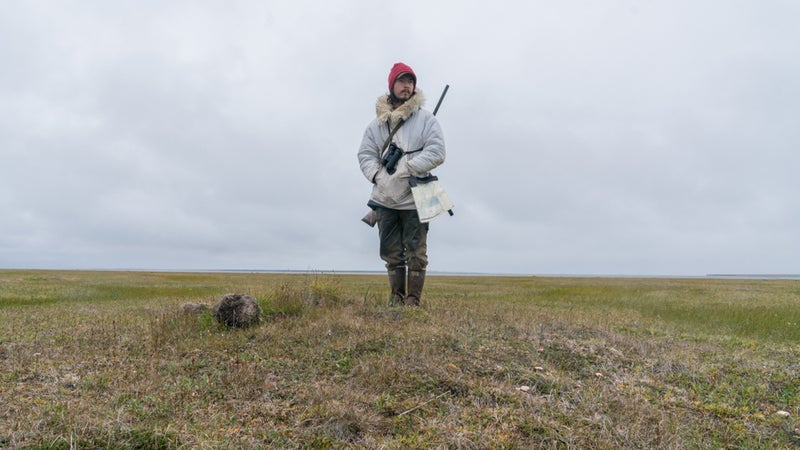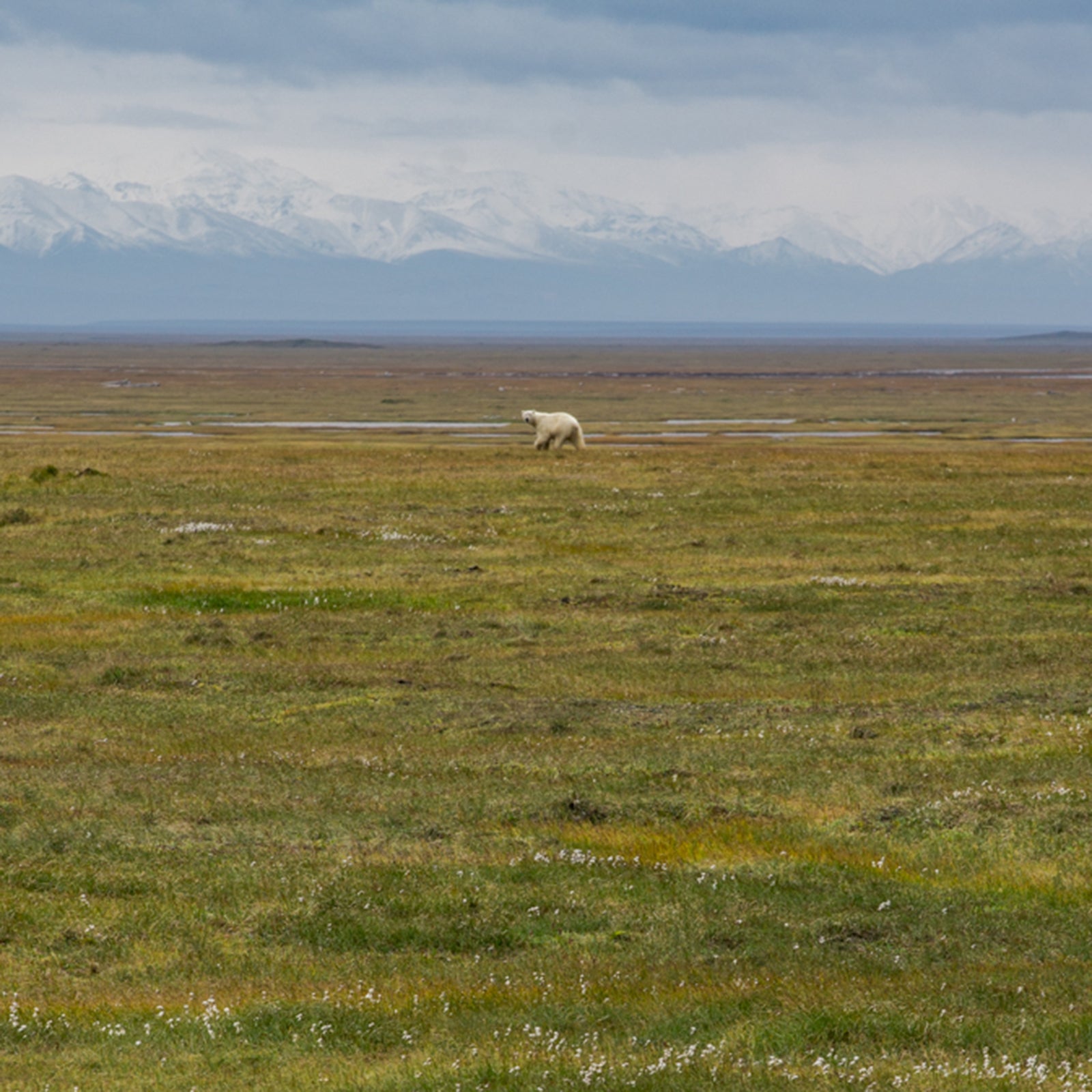The newest miniseries from the environmental podcast��, which launched on November 5, opens with shouting. A man chants, “Drill, baby, drill,” as a crowd roars. Then��a woman leads a call-and-response: “Whose lives? Our lives! Whose planet? Our planet!” In the middle of the brawl? The Arctic National Wildlife Refuge, a South Carolina–size��chunk of northeast Alaska that was opened to drilling by the November 2017 tax bill. The legislation, along with cutting the taxes of��corporations and some individuals, included a number of such deal sweeteners for skeptical lawmakers.
As , Threshold’s host, says early on in the series, the refuge is public land, and so the decision to drill there��belongs to all of us.��(No extraction has actually taken place yet, and��the Trump administration recently����that will delay any drilling there��by at least another year.)��“There is something about a place that you haven’t been to, and that you may never go to, that opens itself for imaginary power,” Martin says. As a symbol, whether for American energy independence or unspoiled wilderness, ANWR��has been at the center of national political debate for decades.��Martin and her team set out to “inject some light into that heat,” as she says in the first episode.
Threshold, which is produced independently out of Montana��and��funded by the and , has spent the last two and a half years unraveling contentious environmental questions through on-the-ground reporting and interviews with stakeholders whose voices don’t often make it into the national media. Its , released in 2017, looked at the politics of bison restoration in the American West, talking to skeptical ranchers, indigenous hunters, and federal conservation biologists. In , Martin and producer visited every country��in the Arctic to understand how climate change touches lives across the region.
In the course of that reporting, Martin told me, she struggled to fold ANWR into the larger story of the Arctic. While the issues—questions of cultural preservation and who benefits from resource extraction—are largely the same as those across the Arctic, ANWR has taken on such an outsize role in current political debates that she felt it deserved its own place under the microscope.
Hence the new miniseries, whose��reporting��circles around the refuge, from the��anti-drilling interior town of Arctic Village to the more drilling-friendly��city of��Kaktovik on the North Slope. Rather than pursue one unifying story, the podcast digs into a string of personal, intersecting ones that span a range of attitudes toward��ANWR. First��the producers take a trip led by Kaktovik-born polar bear guide Vebjorn Reitan. Reitan opposes drilling in the refuge, but his opinion is tempered by the recognition that his Norwegian citizenship and overseas education give him unusual job opportunities. For him, the oil industry isn’t an economic lifeline like it is for many of his neighbors, who we meet in following episodes.��His story leads into the history of the refuge��and that of the conservationists who have fought to protect it, with pit stops in oil towns along the way. In later episodes, Martin says, Threshold will��explore Alaska senator Lisa Murkowski’s complicated role as a pro-drilling, climate-change-affirming Republican.

Martin says that pushing back against the romanticized��Arctic��and diving into its intricacies doesn’t mean taking its beauty and symbolism for granted.��“I’m not trying to take away the power of the place or say that we shouldn’t find it magical and wonderful,” she says. “I don’t think being there has made it one bit less fascinating to me.” Indeed, when she and Mott first arrive at the shoreline of ANWR’s��coastal plain, where drilling would occur,��after��a long boat ride from Kaktovik, Martin compares the scene to a Rothko:��huge, gray expanses of sky and water��separated by a line of green that happens to be the center of this controversy.
However, she does think that getting beyond the��headlines about the area is important.��Newcomers arrive at��the refuge feeling��as though they already��understand the place, she says, because “the Arctic in general has often served as this giant projection screen.”��But that’s what’s so easily lost when we imagine a place like Arctic National Wildlife Refuge, or even Bears Ears in Utah: the places we’re fighting over at a distance are also homes, full of people working to shape their own futures. Plenty of people��in Kaktovik and Arctic Village are familiar with national reporters; some have even chatted with President Obama or testified before Congress. “That flipping of the script is a way to bring some humility to the conversation,” Martin says, “whether you’re passionately pro oil or passionately anti oil, to understand that the people who live closest to it have something to teach, just in the fact that they know more about the rest of the world than we know about them.”


